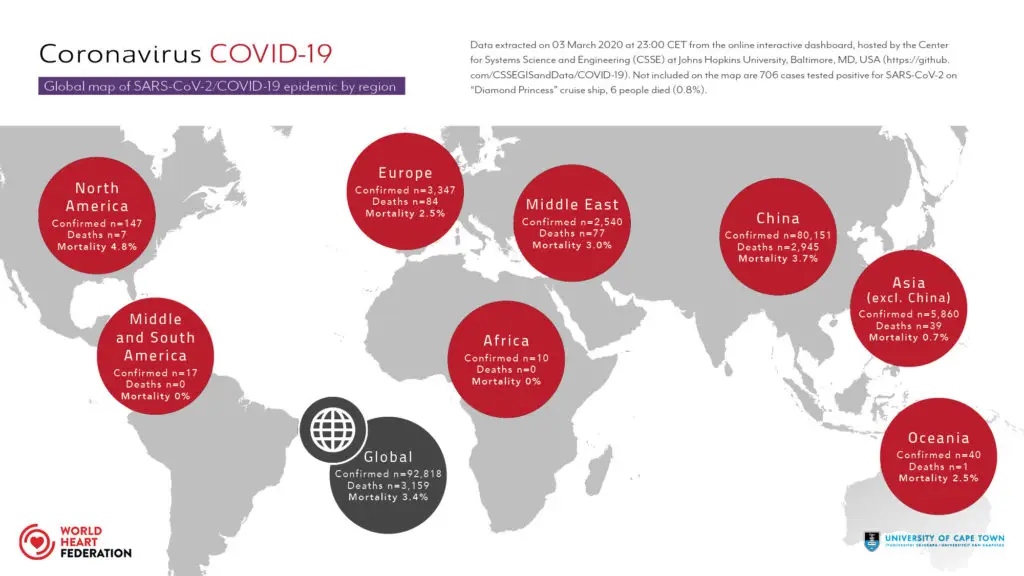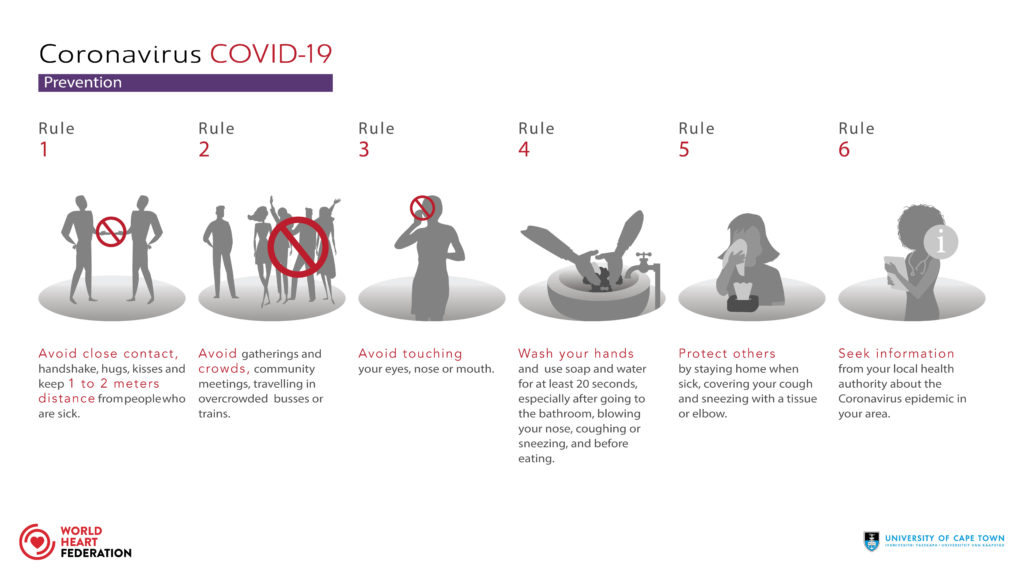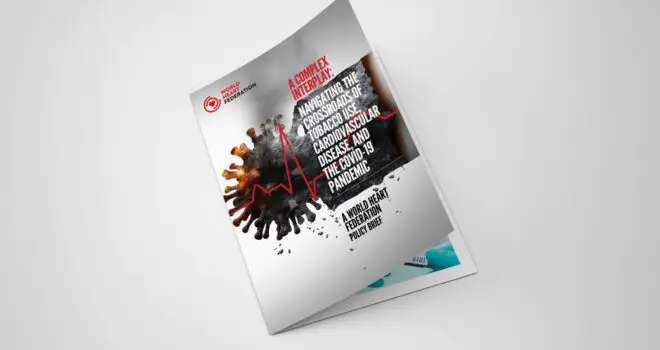5 March 2020, Geneva/Cape Town
The novel coronavirus (COVID-19) epidemic started late December in Wuhan City, Hubei Province, China, and has since spread to 87 countries and territories in the world. Poor regions haven’t been spared and the need for a context-specific response has become urgent. Large and densely populated areas with widespread poverty and high migration are more vulnerable to airborne pandemics. As a global organization representing the cardiovascular community, WHF is committed to offering the latest evidence of the COVID-19 outbreak. With over 200 Members worldwide, we want to ensure that everyone, especially those living in poorer areas, is aware of the necessary measures to protect themselves and others.

As of today, 5 March 2020, there are 22 cases in 7 African countries: Algeria, Egypt, Tunisia, Morocco, Nigeria, South Africa, and Senegal. “A significant part of the population in the continent is already extremely vulnerable”, says Professor Karen Sliwa, WHF President. “Hundreds of millions of people there are affected by HIV/AIDS, tuberculosis or malaria. The vastly spreading COVID-19 can thus lead to an even greater number of deaths and suffering. In addition, non-communicable diseases (NCDs), and specifically chronic obstructive pulmonary disease (COPD), heart disease, hypertension and diabetes are major risk factors for developing severe symptoms of COVID-19.”
We are concerned that previous studies on other coronavirus diseases such as SARS-CoV and MERS-CoV have demonstrated a relationship between CVD, diabetes and increased morbidity and mortality due to coronavirus disease. Considering the greater risk for populations in impoverished settings, WHF has developed the following guidelines on COVID-19 prevention and control in low-income countries.
Recommendations on prevention for special populations and in poor regions
Research suggests than individuals with pre-existing medical conditions, such as diabetes and heart disease, as well as those who live in poor and densely populated areas, are more vulnerable to the worst outcomes of the virus. For people with chronic respiratory disease (e.g. chronic obstructive airways disease), infectious diseases (e.g. HIV and tuberculosis), chronic cardiovascular disease (e.g. cardiomyopathy, previous myocardial infarction, rheumatic heart disease), cancer or autoimmune diseases, Prof. Karen Sliwa and experts from WHF, including Prof. Friedrich Thienemann, Prof. Junbo Ge, Prof. Rick Grobbee and Prof. Fausto Pinto, recommend:
- Avoid large gatherings and crowds as much as possible.
- Keep at least 1-2 meters of distance from a person with respiratory symptoms. Do not stay in the same room with this person.
- Vulnerable people should be considered moving with relatives in rural areas and spend their time in voluntary isolation, such as a small hut. They should receive food supplies via a neighbour or relative, but without direct contact.
- Travel should be reduced to a minimum.
- Use a mask if travelling by bus, train or plane. If masks are not available or affordable, cover your nose and mouth with a cloth or similar.
If COVID-19 spreads extensively in low-income countries, containment may not be realistic and response efforts will likely need to transition to various mitigation strategies, which could include isolating ill people at home and closing schools, universities, places of religious worship and public events.

Further information:
What is COVID-19?
As stated by the World Health Organization (WHO), coronaviruses belong to a family of viruses that can cause mild disease such as a common cold, but also severe respiratory disease such as Middle East Respiratory Syndrome (MERS-CoV) or Severe Acute Respiratory Syndrome (SARS-CoV). The novel coronavirus epidemic Coronavirus Disease 2019 (COVID-19) is caused by a coronavirus named SARS-CoV-2 (Severe Acute Respiratory Syndrome Coronavirus 2).
Transmission and infection
SARS-CoV-2 is transmitted from animals to people and was first isolated from patients with pneumonia in Wuhan, China. The spread from human-to-human occurs via aerosol transmission — coughing and sneezing. Respiratory droplets containing the virus may contaminate surfaces up to 96 hours, for instance, screens of smartphones.
Signs and symptoms
Signs of COVID-19 can include flu-like symptoms such as fever, cough, fatigue, headache and sore throat. The virus can lead to pneumonia, severe acute respiratory syndrome or breathing difficulties and, in more severe cases, be fatal.
For additional information, we encourage you to monitor the updates of the World Health Organization. For other enquiries, please contact us at communications@worldheart.org.


